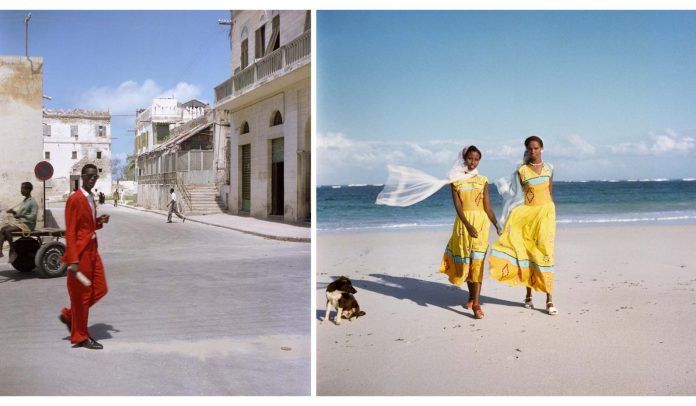The Portland Museum of Art, in Maine, shows a hopeful time, in glorious color.
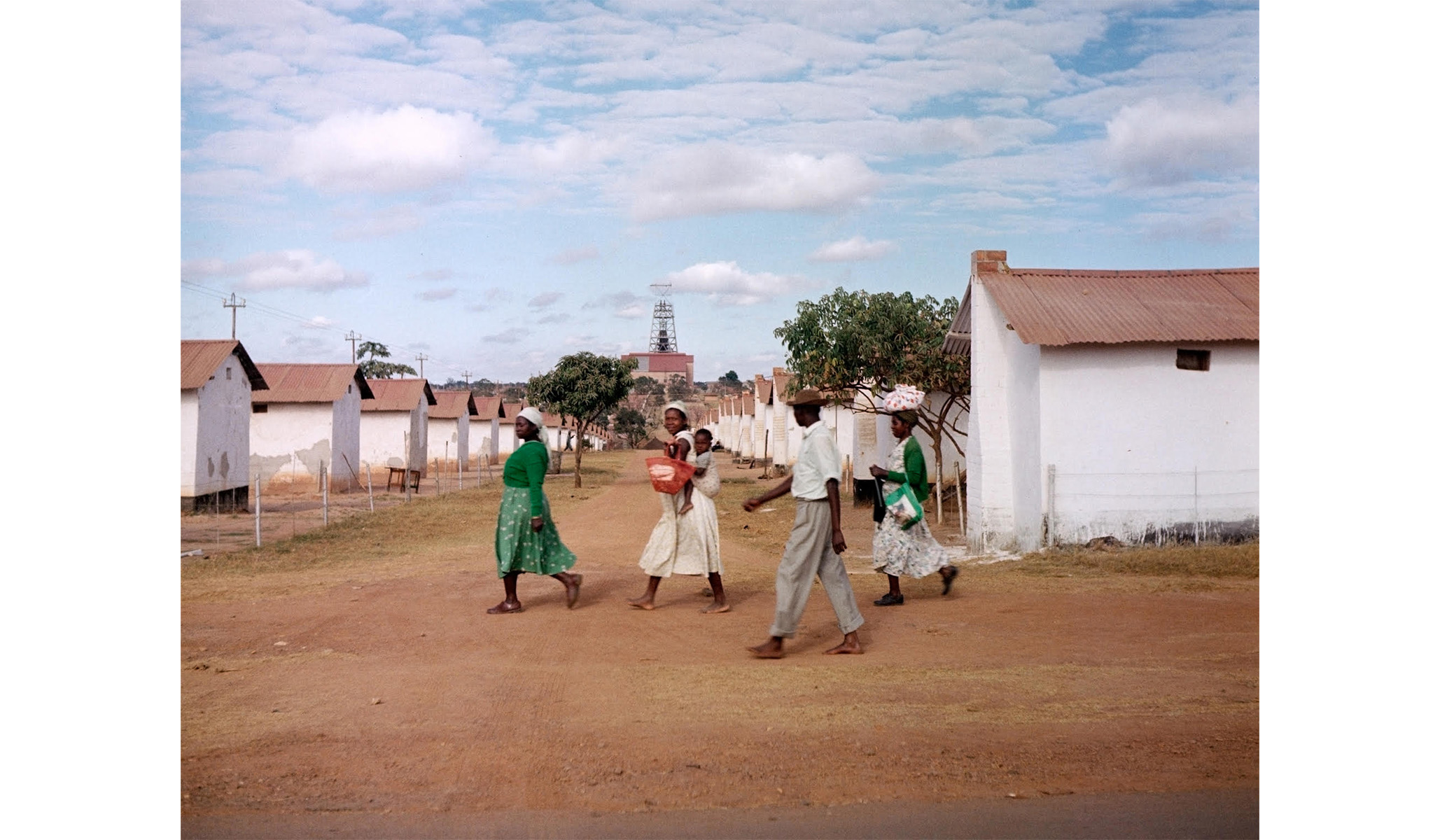
I liked the show a lot because of Webb’s photographs and the moment in history, a hopeful one, that he covers and conveys. I also know and like most everyone at the museum, but my loyalty is to my readers, my values, and 30 years of experience. I hope my exasperation with the catalogue and labels doesn’t make me yet more enemies, but that’s an occupational hazard. Visitors can enjoy the exhibition and learn from it without paying much heed to the curators’ commentary. Their concern with the art waxes and wanes. Mostly, the curators want us to know all about colonialism, equity, and white privilege.
Todd Webb in Africa begins with a useful CIA map of the political status of Africa in 1958 and Webb’s itinerary. He’d never been to Africa. The show then deals with Webb’s aesthetics mixed with history starting with Togoland, his first start. Webb’s photographs have panache. He’s an artist of uplift, not depression. I’m a natural optimist, so this appeals to me.
As part of his U.N. commission, he was to document the emerging democracy’s parliamentary election. Crowds of happy men and women in buoyant local dress walk to polling places and wait in line. In one photograph, and it’s a favorite, a group of men in white hats and white frocks seem to enjoy an Election Day party. White is the color of celebration there. One hat has the word “Ablode,” or “Freedom,” spelled across it. In the middle, another man wears a Santa Claus mask and salutes. Christmas came twice a year, it seems, in 1958. The scenes are in perfect sync with Webb’s sensibility.
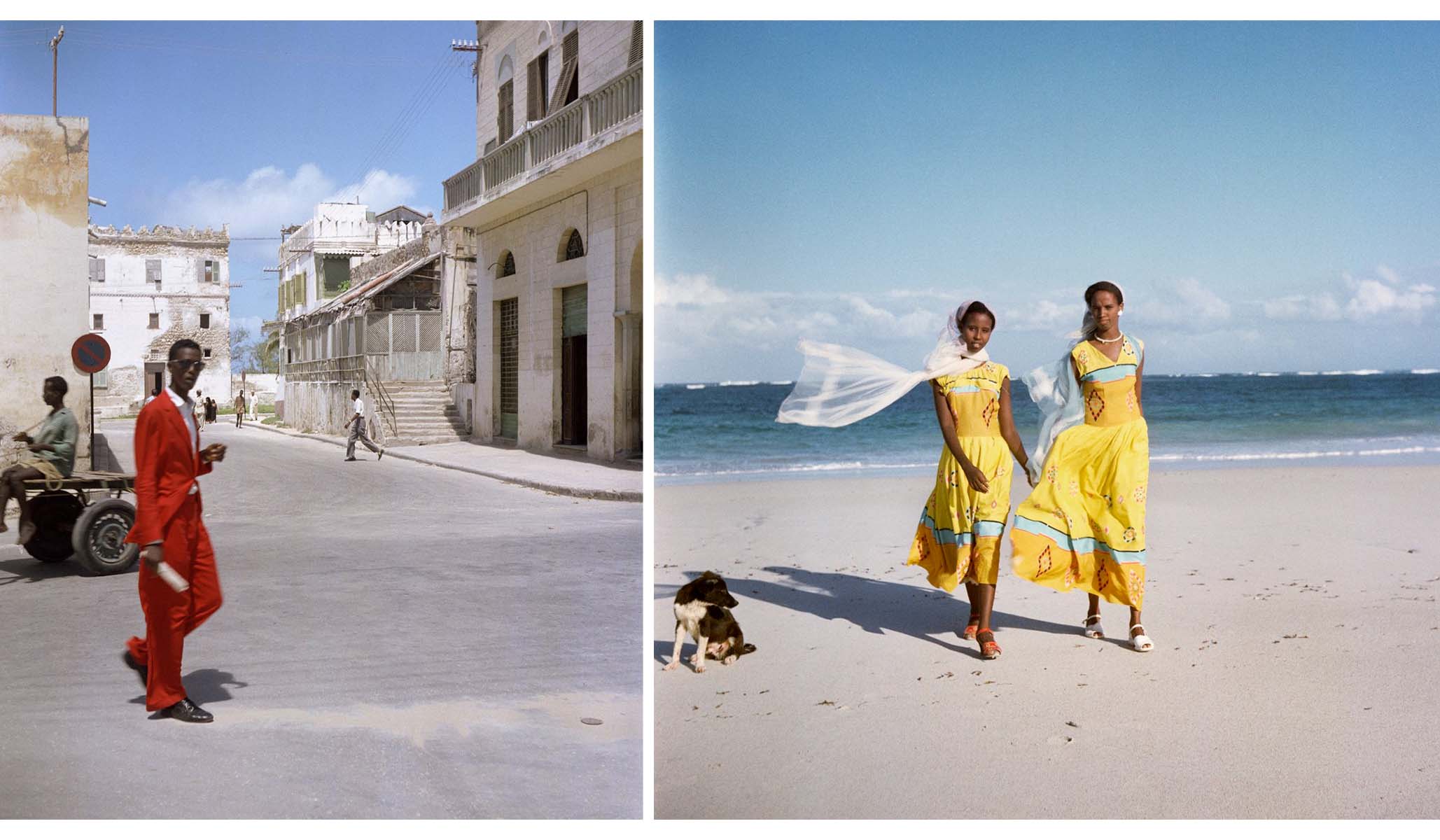
Another favorite of mine shows a tall, lean man in Mogadishu in Somaliland wearing a stylishly tailored tomato-red suit. Near it, a captivating photograph shows two young women in identical yellow dresses striding with confidence toward Webb. They’re on a beach with bands of ocean, surf, clouds, and blue sky making a satisfying, minimalist composition. They look like the model Iman.
Part of Somaliland was a British protectorate while another was a U.N. Trust Territory under Italian administration. The Italians had had much influence in Somaliland for years, so we’re seeing a bit of Italian swagger, but dervishes were aplenty there, too. Whirling takes lots of verve.
The meat-and-potatoes pictures — the ones the U.N. propagandists wanted the most — were industrial scenes. Here, Webb shows what a clean eye he has. In 1958, he’s in his early 50s. He’s a Modernist, but his foundation is less post-1945 and more Art Deco. Two hydroelectric power-station photographs taken in Tanganyika are both crisp and intense. They’re heavy on shiny geometric shapes leavened by trimmed, green grass. More ingratiating is a photograph of a Texaco gas station with a sharp-looking, smiling attendant standing by a pump.
The U.N.’s public-information office, Webb’s boss, didn’t want photographs of bare-chested women, pygmies, roaring lions, or dancing men in grass skirts. That was fodder for National Geographic and, in any event, neither Webb’s interest nor talent. His subjects aren’t sexual or primitive.
The U.N. wanted scenes of everyday life emphasizing people happy to work and wanting a modern lifestyle. Progress, as almost everyone except luddites believed, came through development and industry. A catalogue essay asks whether the Texaco gas-station attendant posed, in which case he was an actor, or was posed and therefore an unwilling participant. To me, he looks happy, proud, and confident. The curators seem to think that’s either impossible or foolish. They’re itching for misery and trauma from colonial domination and power imbalances.
Real people don’t think that way, and neither do the best artists. Some of Webb’s photos are Modernist studies in form. Some, like a photo of camels resting in Sudan, flirt with comedy. One is more ham than camel. Together, their humps and heads mirror mountains in the far distance. Photographs of Mount Kilimanjaro show a foreground of sisal. They’re Webb’s debt to Ansel Adams. It’s part picturesque, part majestic, like a Hudson River School painting.
The plants, we’re told, are foreign colonizing forces, imperiling indigenous plants, and evidence of a capitalist obsession with mechanized progress. Maybe so, but that’s 2023’s take, for comfortable, well-paid Portlanders. It’s not 1958’s, and not Webb’s. He wasn’t hired to document trauma. Like we are today, he was a creature of his time and place.
Many of the photographs in Todd Webb in Africa concern teamwork, whether it’s riggers or miners, or men unloading cargo or pulling in their fishing nets from the sea. He snapped pictures of murals painted on buildings by local artists. An outdoor tailor in Tanganyika measures a woman, his Singer sewing machine by his side. A man visits a clinic for an inoculation. A medic and a nurse are on duty. Police get into a truck. Yes, they’re folksy, but, along with photographs of men at work and industry, they show places that function like a modern society should, by 1958 standards.
Sisal, copper, oil, and other minerals might have been — and should have been — the path to a better future for Africans. That it wasn’t is not entirely an issue of white privilege, colonialism, trauma, and inequity, all buzzwords. Postcolonial leaders in Zimbabwe, Togo, Sudan, and Somalia trashed their economies, democracies, and people’s opportunities.
Helping them were ethnic enmities that preceded the colonial era, which was, by the way, shorter than most people realize. Today, Africa’s population is growing, and growing fast. People want prosperity, cheap energy from oil, and agriculture that feeds hundreds of millions. Real people draw a line under old grievances and move on.
French, German, Belgian, and British adventures in Africa were very different, as are their legacies. Why does Webb get the equity target on his back?
One wall panel tells us that Webb documents “climate collapse.” He does no such thing, anywhere, and how, pray, does a climate collapse? The museum needs to give the tiresome equity, climate, diversity, colonialism crap a rest. It’s relevant — now and then — but here it’s anti-art and anti-artist.
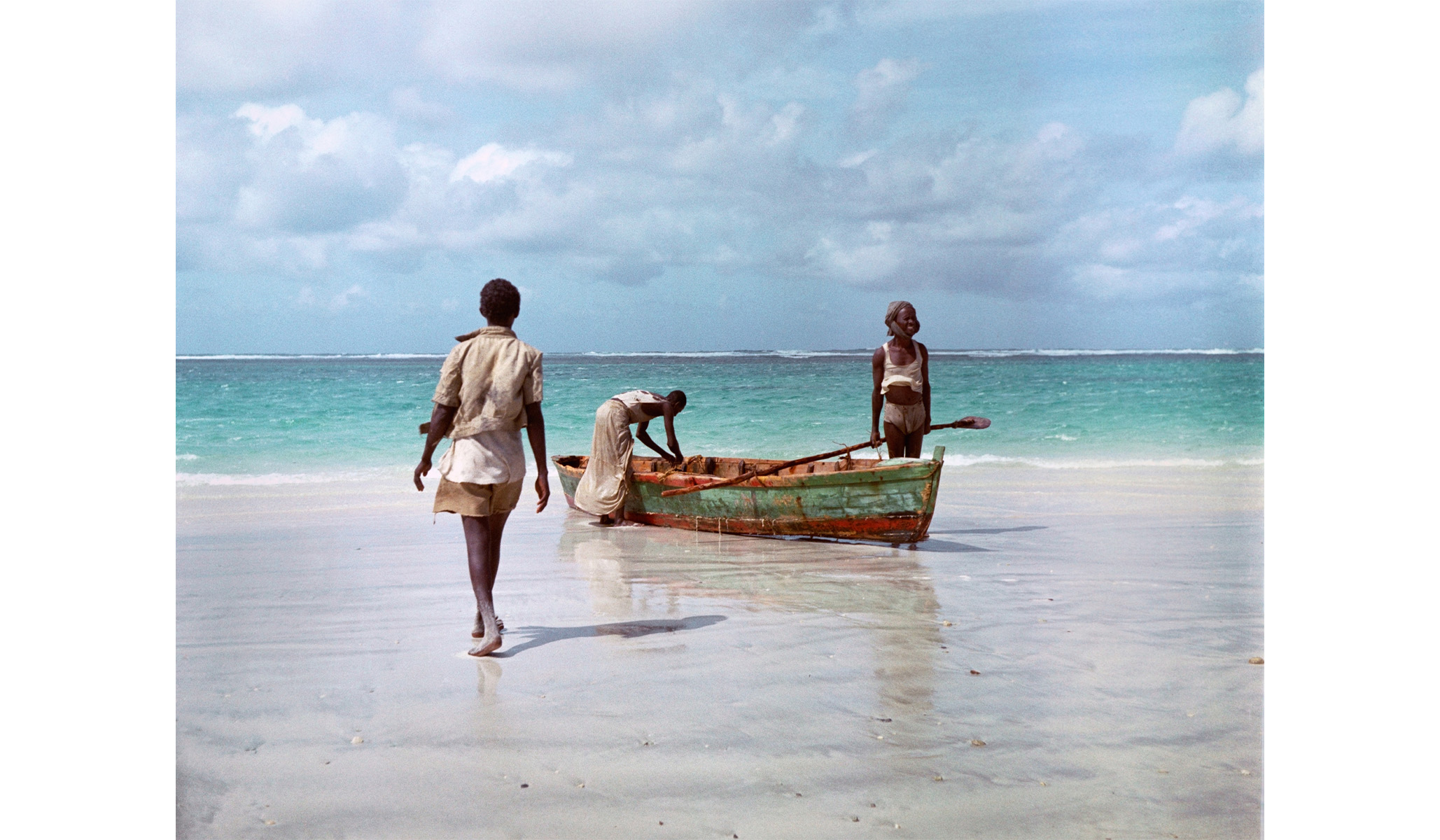
Webb is mostly working in color, not entirely a new feature of photography but, in 1958, not the default palette. Aimee Bessire, one of the curators, wrote a great catalogue essay on Webb’s use of color. Webb’s photographs are early color documents of African life. Africa, because of customs, light, the sea, brilliant blue skies, and the tropics, is naturally colorful, but, at least for artists, black-and-white was more serious. Contrast, tone, and shadow were both subtle and difficult while color might seem frivolous and the stuff of Disney.
By the ’50s, color was seen — more positively — as bringing reality to life. Color film and color processing were expensive, so Webb’s commission by the U.N. was meant to be high-end. Bessire makes the good point that color-film manufacturers weren’t at their most precise. They didn’t think about calibrating dark skin tones until the ’80s and ’90s. Pushed by chocolate and furniture manufacturers who felt that color film didn’t get the nuanced color of their products, Kodak got serious about different browns. It’s a case of racial bias and a point well taken.
I don’t agree with Bessire’s point that color deficiencies diminish Webb’s black subjects. A picture of patrons and waiters at an Accra hotel shows racial inequity in action, she says. Off-base color depersonalizes the waiters, she claims, but I don’t see it. Yes, it’s a servant-and-served picture, but the white patrons aren’t any more crisply defined than the waiters. Webb is more concerned with the colors of the umbrellas.
Webb’s portraits of black subjects are often very personal and gorgeous. The sumptuously illustrated catalogue makes the most of Webb’s and Africa’s palette.
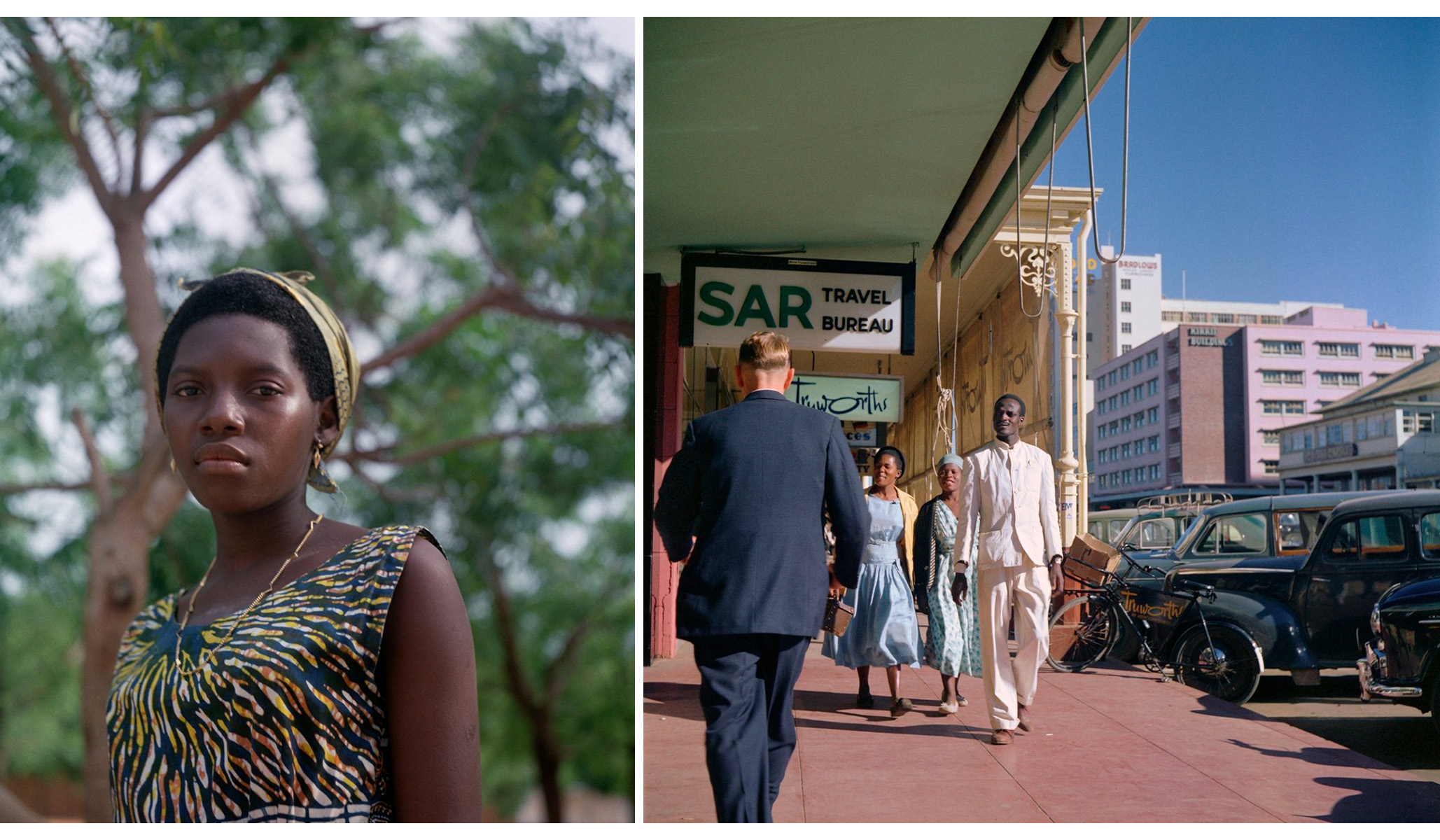
Webb’s place in art history seemed badly compromised in the ’70s when the good-natured, naïve Webb sold his entire archive — thousands of photographs and negatives — to a pushy art dealer who sat on it. This sometimes happens in the art world. Its parallel in the movie business is the studio that buys a script or rights to a novel but never actually produces something for the screen. Over time, Webb understood that his work and reputation would likely go nowhere.
Betsy Hunt, a Portland art dealer, knew Webb. She discovered a few years ago that the archive had changed hands. The new owners — three art investors — weren’t doing much with Webb’s archive, which lived in five trunks in one investor’s thankfully dry cellar. Hunt tracked the investors down. She was given access to the archive. It’s a King Tut’s Tomb moment in the art history of photography. The discovery of Vivian Maier’s photography archive — more than 100,000 negatives and 3,000 vintage prints — is another example.
Hunt and co-director Sam Walker, a Portland photographer, now run the Webb archive and sell Webb’s work. In excavating the trunks, they uncovered almost the entirety of Webb’s art, including his post-war New York pictures and, in the third trunk they examined, the African negatives from 1958. This work, unknown to Hunt and forgotten by everyone else, never got much play. Webb’s U.N. minders published only 22 of his photographs, and in black-and-white. Even in the late ’50s, the U.N. was morphing into a bunch of rats.
In 1955, Webb traveled across the U.S., mostly on foot, hitchhiking, and on a Vespa, photographing everyday life, mostly in rural America. Webb had many gigs in his lifetime. He was hired to document the Marshall Plan’s effects in Europe. He worked for Standard Oil, Fortune magazine, and newspapers. He prospected for gold in Panama, worked for Chrysler in his native Detroit, and was a stockbroker in the late ’20s. His trip across America started with a Guggenheim Fellowship to document old pioneer trails. Robert Frank got a fellowship in the same round, so they’re on parallel paths.
Frank’s prize led to The Americans, the famous group of photographs of high and low culture in the ’50s. Frank is American, but he was born and raised in Switzerland. He’s very Swiss — detached, composed, predictable, and tight. Webb’s take is different.
The photographs from Webb’s trip across the country were never published. Later this year, they’ll premiere in an exhibition on Webb and Frank organized by Houston’s Museum of Fine Arts. Webb’s time is now.
National Review























